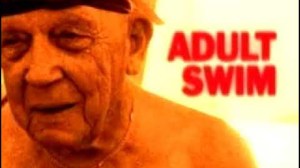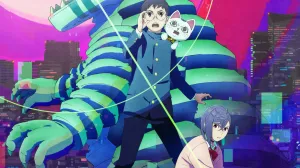
A recent trend in superhero comics is the resurgence of the solo superhero series, featuring unique and oftentimes quirky takes on popular but not necessarily iconic superheroes. The two best examples of this are Hawkeye and Batgirl, both critically acclaimed series with passionate fanbases and plenty of online hype. DC “Batgirled” a number of its second and third tier superheroes in recent months, hoping to emulate the success of that series, while Marvel’s “Hawkeyzation” of its solo series occurred with the launch of its Marvel NOW! Initiative in 2014. While Hawkeye and Batgirl are both significant to modern comics (and for good reason), it’s arguable that both books only continued the trend started by Mark Waid and Chris Samnee’s now concluding Daredevil run.
Videos by ComicBook.com
For years, Daredevil had been one of Marvel’s grimmest comics. Recent years had seen Daredevil outed as Matt Murdock at the hands of the Kingpin, loved ones murdered or driven insane by various villains, a stint in prison, and even a brief possession by a demon. When Mark Waid and artist Paolo Rivera took over Daredevil in 2011, many wondered how the two creators would destroy Murdock’s life next. The answer: they’d make Daredevil happy.
The creator’s Daredevil run marked a return to the fun, swashbuckling superhero adventures not seen in a Daredevil book since the Silver Age. Not only did Daredevil beat gangsters and supervillains without losing loved ones or suffering personal tragedy in the process, he did it with a smile, pursuing life with a newfound optimism and bravado. For months, Daredevil readers waited for the other shoe to drop, because this was a Daredevil series and Matt Murdock could only experience so much good in his life before the Kingpin showed up at his doorstep and beat him half to death. But the wins kept piling up for Daredevil and while Matt’s personal life was a mess, he wasn’t adding to his problems with his typical self-destructive behavior. For the first time in years, Daredevil was a “fun” comic, a relative rarity in a genre filled with serious and straightforward takes on superheroes.

Not only was Waid and Rivera change the tone of Daredevil, they also radically altered how the series looked. Rivera and fellow artists Marcos Martin and Chris Samnee (who settled into the main art duties about a year into the story) explored Matt Murdock’s unique sensory abilities via innovative layouts and bizarre and surreal imagery. The artists visualized Murdock’s world differently, combining clean precise lines with otherworldly effects to visualize Matt’s perspective far differently than the usual fuzzy radar scenes usually seen in past Daredevil runs. Not only did the artwork in Daredevil look different, the colors were brighter and more vibrant, a significant departure from the dark toned and serious books that came before it.
However, even with all the fun swashbuckling crimefighting and colorful adventures, Waid and Samnee’s Daredevil was still a Daredevil book, which meant that tragedy lurked just around the corner. All those laughs and smiles hid Murdock’s inner anguish and at times made the hero seem almost delusional. And while readers read Daredevil with a smile on a face, it was all a set up to make Matt’s new miseries resonate that much more. That was Waid and Samnee’s greatest triumph on Daredevil. In a series traditionally defined by gut punching tragedy, Waid and Samnee made readers think that the hero’s life was coming together, which made the next gut punch hurt even more. Even with all the changes that Waid, Samnee and Rivera made, readers never lost sight of Daredevil‘s tragic and bittersweet core.
Daredevil won multiple Eisner Awards during its four year run and was widely acclaimed among Marvel fans and reviewers.In fact, the series was among the best reviewed books of the last five years. Mark Waid, Chris Samnee and Paolo Rivera reminded superhero publishers that a solo superhero series could depart from the status quo without sacrificing the core tenets of a character. It also proved that fun comics with innovative artwork still had a place in today’s comic market, leading to books like Hawkeye, Batgirl and The Unbeatable Squirrel Girl. And most importantly, Daredevil was a good superhero comic, a gold standard for all Marvel and DC books to emulate. While Waid and Samnee’s time on Daredevil is ending, their impact on the modern comics landscape will not be forgotten soon.








